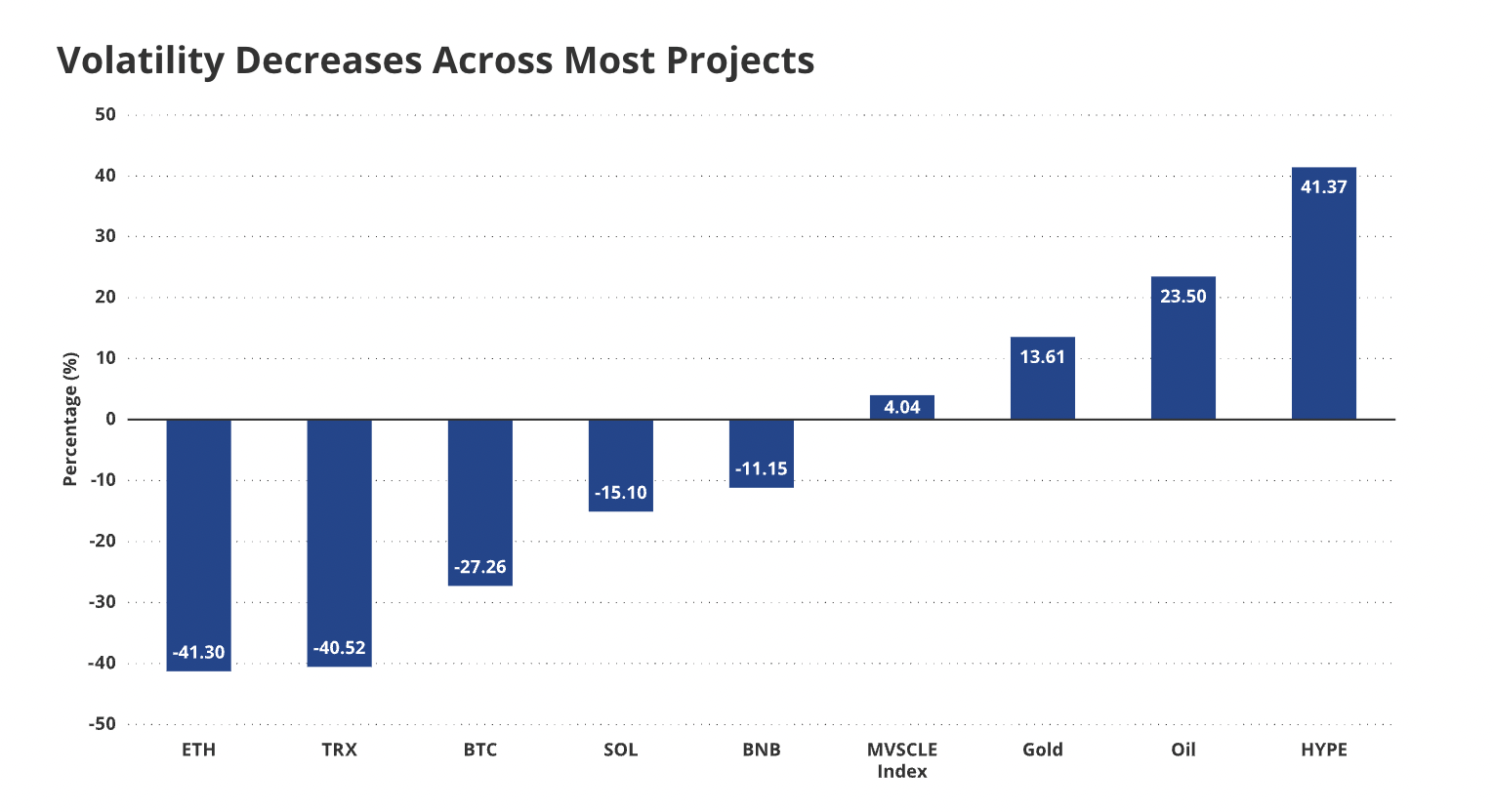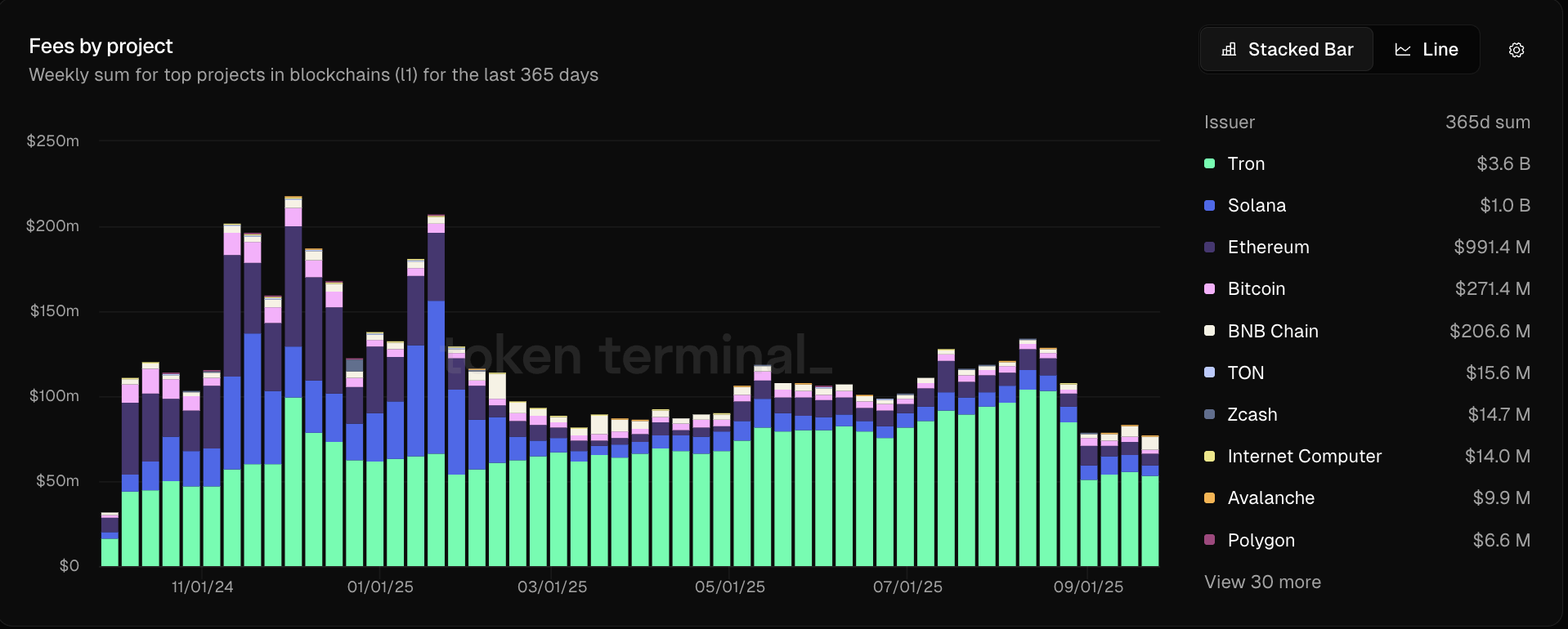
Overview
In September, blockchain network revenues experienced a notable decline of 16% from the previous month according to insights provided by asset management firm VanEck. This downturn primarily stemmed from diminished volatility in the cryptocurrency markets.
Revenue Trends by Network
Revenue figures revealed that Ethereum saw a 6% drop, while Solana experienced an 11% decline. The Tron network was the most affected, with a staggering 37% decrease in fees attributed to a governance decision which substantially reduced gas costs in August, as detailed in VanEck’s report.
The overall decrease in revenues was largely linked to lower market volatility, affecting the key tokens of various networks. Specifically, Ether’s volatility fell by 40%, while Solana’s went down by 16%, and Bitcoin’s showed a 26% reduction in September.
Graphical Data
 Most cryptocurrencies experienced reduced volatility in September. Source: VanEck
Most cryptocurrencies experienced reduced volatility in September. Source: VanEck
“With reduced volatility for digital assets, there are fewer arbitrage opportunities to compel traders to pay high priority fees,” stated the authors of the report.
Insights on Network Revenues
Network revenues, along with transaction fees, are pivotal indicators of economic activity within crypto ecosystems. Analysts, traders, and investors closely examine these metrics to assess the health of specific projects as well as the broader crypto landscape.
Related Information
Tron Dominance in Revenue Metrics
The Tron network currently leads in terms of revenue generation, boasting an impressive $3.6 billion in the past year, according to data from Token Terminal. Comparatively, Ethereum only garnered $1 billion during the same timeframe, even with ETH reaching all-time highs in August alongside a market cap nearing $539 billion.
 A comparison of crypto network fees over the last year. Source: Token Terminal
A comparison of crypto network fees over the last year. Source: Token Terminal
Tron’s significant revenue generation is largely due to its crucial role in stablecoin settlements, with over half of all circulating Tether USDt (USDT) being issued on its network. The market cap of stablecoins surpassed $292 billion as of October 2025, showing steady growth since 2023. This increase is viewed as a pivotal application of blockchain technology as countries work to enhance the usability of their fiat currencies through crypto integration.
Key Advantages of Blockchain Assets Blockchain technology allows currencies to swiftly move across borders, featuring rapid settlement times, low transaction fees, and round-the-clock trading accessibility without the necessity for a bank account.
Magazine Feature
Read about the potential patterns for Ether in our latest edition: Ether could ‘rip like 2021’ as SOL traders brace for 10% drop: Trade Secrets.
Tags: #Bitcoin #Blockchain #Altcoin #Ethereum #Fees #Market Release



